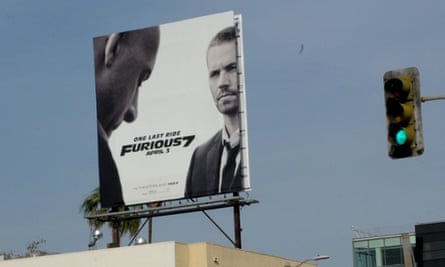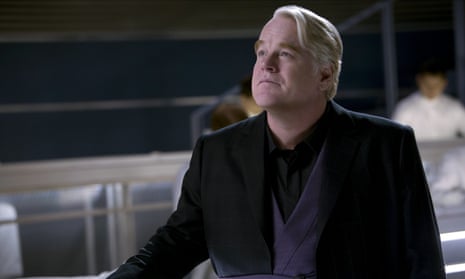It has become a horribly familiar feeling: watching a film starring an actor who died during production, and waiting for the moment when their absence is felt.
This week sees the arrival in cinemas of The Hunger Games: Mockingjay – Part 2, during the filming of which, in February 2014, the Oscar-winner Philip Seymour Hoffman died. Hoffman, who joined the series for the second film, Catching Fire, plays gamemaker turned revolutionary Plutarch Heavensbee. While many of his scenes had been completed, a key emotional moment with Jennifer Lawrence’s freedom fighter Katniss Everdeen had not been filmed. It has resulted in a final-act tweak to the script, which swaps a face-to-face meeting for something more subdued.
Hoffman had been sharing ideas with director Francis Lawrence about how the scene should be performed, but never had the chance to bring it to life. Instead, his words are read by Woody Harrelson’s character in a letter. If the film-makers had decided to follow the book more closely, Hoffman would have had a far greater presence in the film’s latter scenes, where a key character is saved thanks to Heavensbee.
After Hoffman’s death, there was a change to the shooting schedule, giving the cast shorter working days to allow time for mourning. A small amount of digital trickery, using existing footage of the actor, was used to disguise his absence.
“I regret to have that … label of it being his last film. Because obviously, there’s not quite enough of him in it,” said Francis Lawrence. “I would have liked his role to be larger.”

Earlier this year, the death of Paul Walker in a car accident hung heavy over the release of Fast & Furious 7, the latest in a series associated with lighthearted action and carefree car chases. The studio reportedly spent an extra $50m to complete the film, using a combination of CGI and his younger brothers as stand-ins. The film became one of the year’s biggest hits, making $1.5bn worldwide – almost double that of the previous film.
“Paul Walker’s death certainly made Fast and Furious 7 more of an ‘event’,” says Katey Rich, Vanity Fair’s Hollywood editor. “It was a chance to honour his career as much as it was a movie, and the film-makers really leaned into that in the way they made the film.”
Walker and Hoffman are by no means the first actors to die during production – Marilyn Monroe, Oliver Reed, Bruce Lee and John Candy all passed away mid-shoot – yet new technology and the rise in franchise films, often shot back-to-back, have led to new questions being asked about how to deal with losses of actors in the future.

“As more and more blockbusters are made as part of mega-franchises, this seems like it will inevitably happen more and more,” says Rich. “The Philip Seymour Hoffman model – dealing with his absence without making a huge deal of it – seems like the best way to address it.”
Rob Legato, an effects supervisor, told the Hollywood Reporter that in the future, actors involved in big-budget blockbusters might need to have a variety of facial expressions digitally scanned, in case something were to happen.
The final Hunger Games film is expected to be one of the year’s biggest hits, with analysts predicting a global opening weekend of $300m (£197m). Its success would have been secured regardless, but there is an undeniable extra layer of interest. “People are curious,” says Rich. “There’s a morbid fascination that exists in so many elements of culture … which makes it all the more of a spectacle.”

Comments (…)
Sign in or create your Guardian account to join the discussion